The Bulgarian Black Sea coast is part of the “Via Pontica”, the second most important bird migration route in Europe. In spring and autumn, millions of birds use it to get from their summer breeding sites in the north to warmer wintering sites in the south. But even birds do not have enough stamina to fly thousands of kilometers without a rest. And because the restless sea is not the perfect place to rest, lakes along the Black Sea coast are crucial resting places for all kinds of migrating birds.
One of the biggest wetlands along the Black Sea coast are the Burgas lakes in Bulgaria. The five lakes and their surrounding wetlands cover almost 100 km² and on the right days, you can see thousands of birds here. We met up with Galina Meshkova from the NGO ‘Green Balkans’ and Diyana Kovstovska from the NGO ‘Bulgarian Biodiversity Foundation’, two organizations that run projects for the protection of Lake Pomorie and Lake Atanasovsko.
Hypersaline lakes
Just 10 km apart from each other, lake Pomorie and lake Atanasovsko are both hypersaline (meaning they have higher salt concentration than the Black Sea) lagoons that were formed naturally but only sustain their hyper salinity due to human activity. In both lakes, sea salt is being produced by flooding the lakes, which are below sea level, with sea water and then letting it evaporate to crystallize the salt. This practice creates unique habitats for all the birds and many other species.
In recent years the services that the lake provided were undermined due to a disrupted hydrological regime as a result of floods in 2015. Pollution of water is observed along with decreased salinity and shifted food basis for the birds at the lagoon. Lowered salt production and infrastructure damages led to limited investments for maintenance of sea salt production and its secondary products – lye and medicinal mud.
The hydrological regime of Lake Pomorie is defined by inflow of sea water through an artificial canal connecting the lake to the Black Sea as well as through natural infiltration of seawater through the sand spit separating the lagoon from the sea. Inflow of freshwater from rain is limited by two protective drainage canals that guide incoming water around the lagoon. These are the exact objects for restoration and rehabilitation to ensure optimal hydrological balance of the lagoon assuring normal functioning of the entire ecosystem.
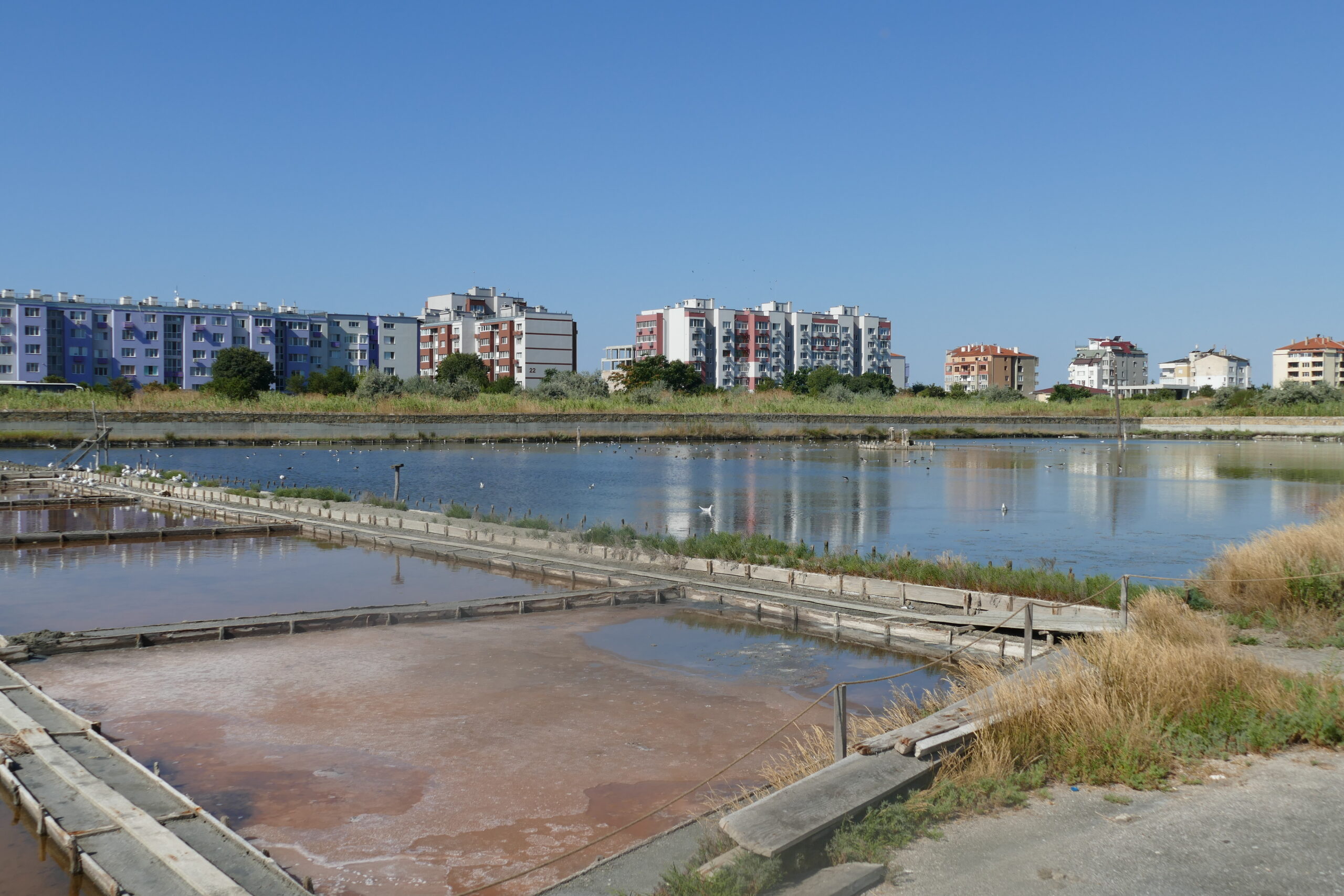
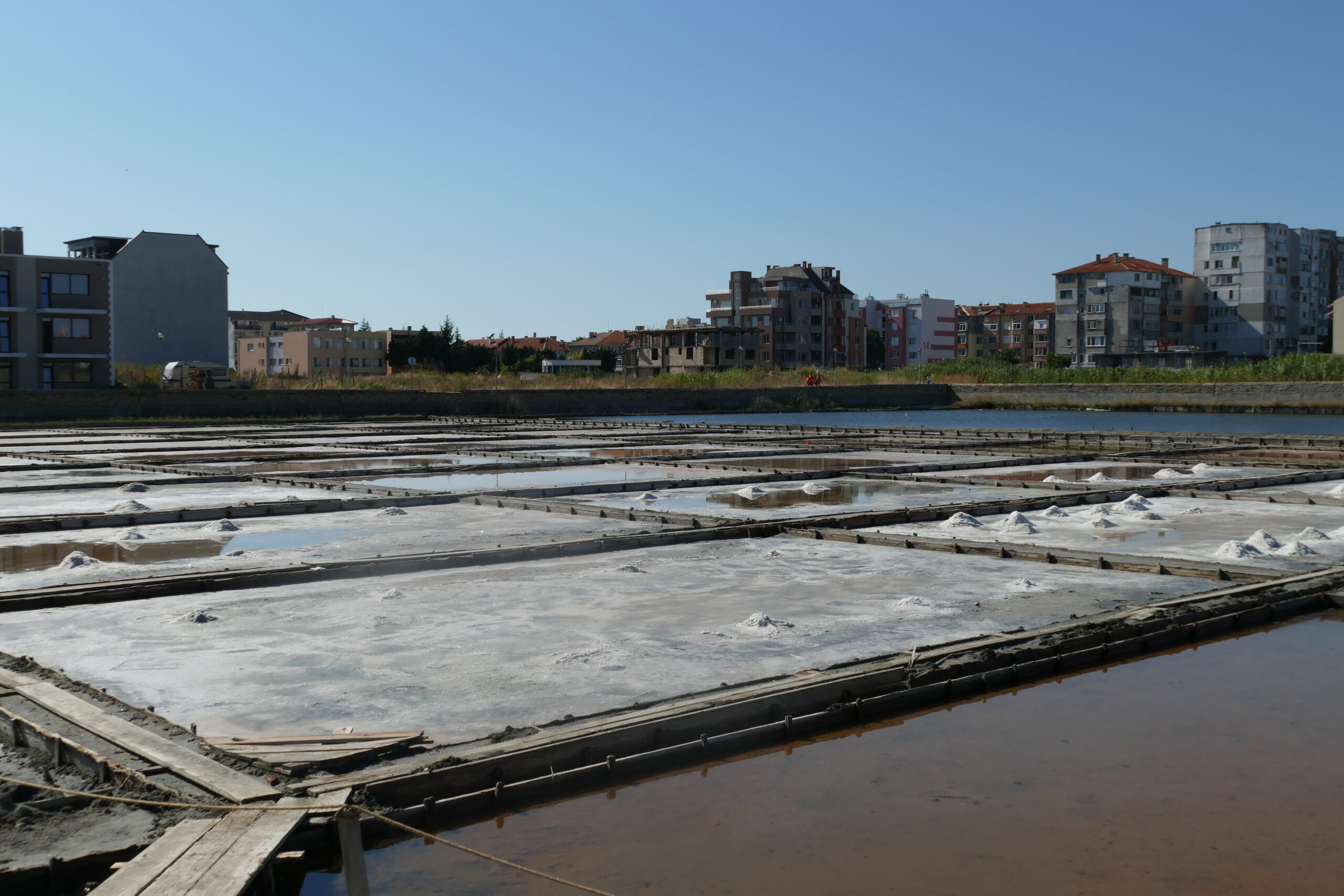
An “inverted island” among the sea of resorts
Lake Pomorie is located in the city of Pomorie, a famous holiday resort on the Black Sea. This means that the holiday resorts and hotels are only a few hundred meters away from its southern shores. The eastern shore is actually just a thin strip of about 20m consisting of a reinforced dike and a sand beach that separates the lake from the sea. We arrive in Pomorie in the evening and we cannot say that we were impressed by the lake at first. The only visible sign that this is a nature reserve is a board. Around that, we see hotels at its shores, trash, people swimming in the lake and putting its mud on their bodies because it is believed to have health benefits. We are going to meet Galina at the edge of the city in the morning, so we find a spot to stay on the narrow land strip for the night. When we wake up in the morning, we start to realize why this lagoon is so special. While we have breakfast, a cloud of hundreds of swifts flies around us, owning the sky and feasting on the millions of flies that cover every human walking by.
Galina and her colleagues come here every two weeks to monitor the species and numbers of birds present on and around the lake. Almost 300 species occur here, 40% of all bird species in Europe. Especially during autumn migration, up to 12,000 birds are at the lagoon at the same time. Most birds just pass by in spring and autumn, but some breed here in summer or spend the winter in the lagoon. Lake Pomorie is for example home to a large breeding colony of sandwich terns in summer with up to 4000 breeding pairs, all squeezing on a small artificial island.

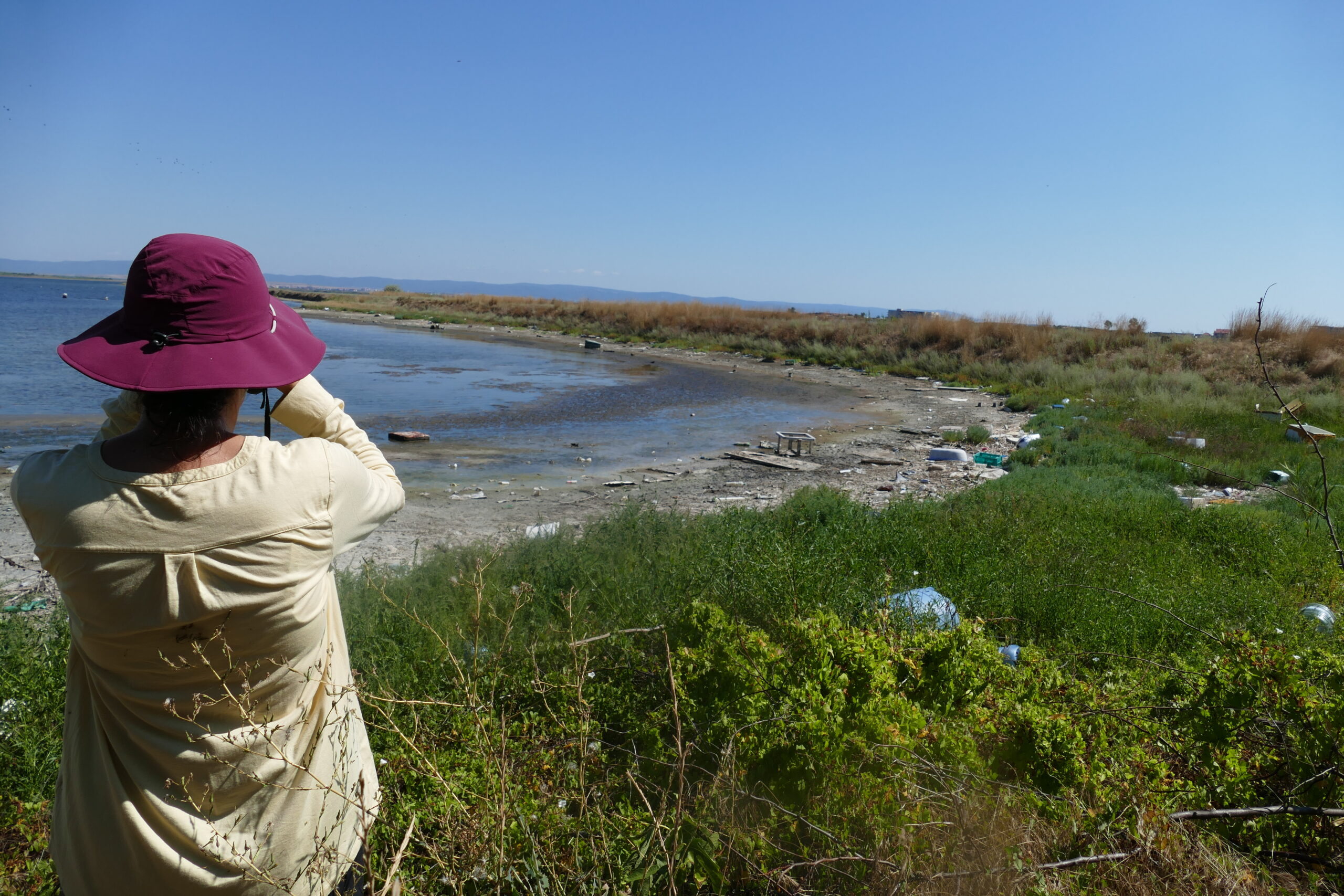
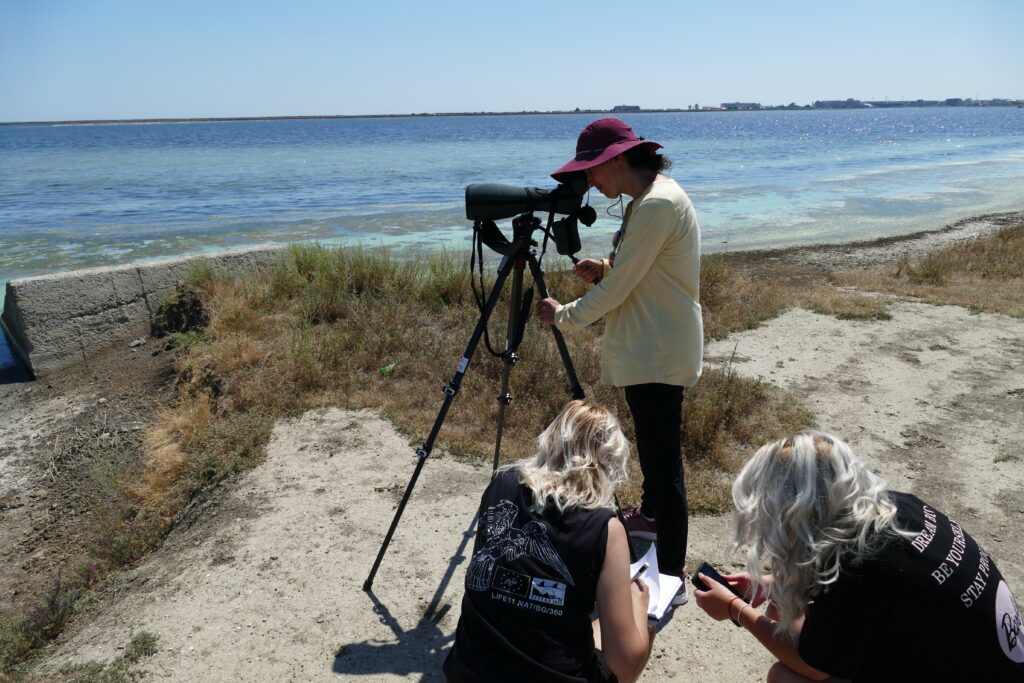
The first two spots to count the birds feel a bit weird to us. We stand on the shoreline around Galina, who is looking through a big telescope. Right in front of us, people in swimsuits rub themselves in the medicinal mud and wonder what we are doing here – we do indeed somewhat look like we came with the telescope to zoom onto them, but we assure them that our interests lie purely in the birdlife of the lake. The third spot is more secluded in the reeds behind a big supermarket, but the amount of trash in front of us is shocking. Even though it is a protected area, people apparently use it as a trash dump. But when we get to the western side of the lagoon, its natural value is finally not covered by heaps of waste nor infrastructure. Thanks to the restless struggle of Green Balkans and other nature lovers, no development has taken place here and birds can strive without human interference. We see waders, grebes and loons in the shallow water of the lake and hundreds of gulls and other birds in the distance. The highlight is clearly the surprising arrival of 700 flamingos that land on an island just in front of our eyes in two big groups. It is an incredible spectacle to see a cloud of pink birds appearing in the sky and occupying the shallow waters. These flamingos are actually a new species observed in Lake Pomorie and only started coming here a few years ago. Is it unclear why, but it is known that some of them fly all the way from Spain and other places in the Mediterranean.
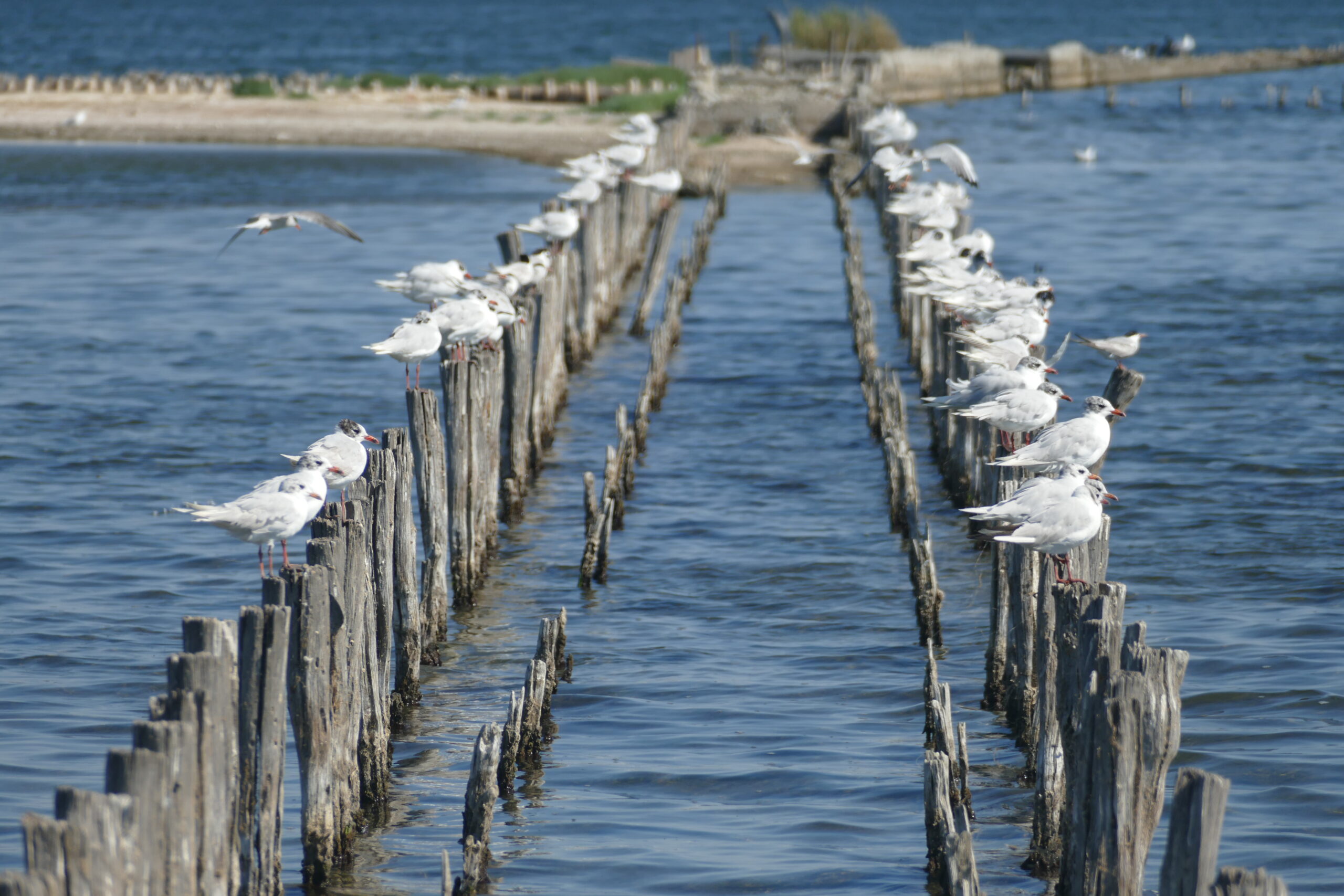
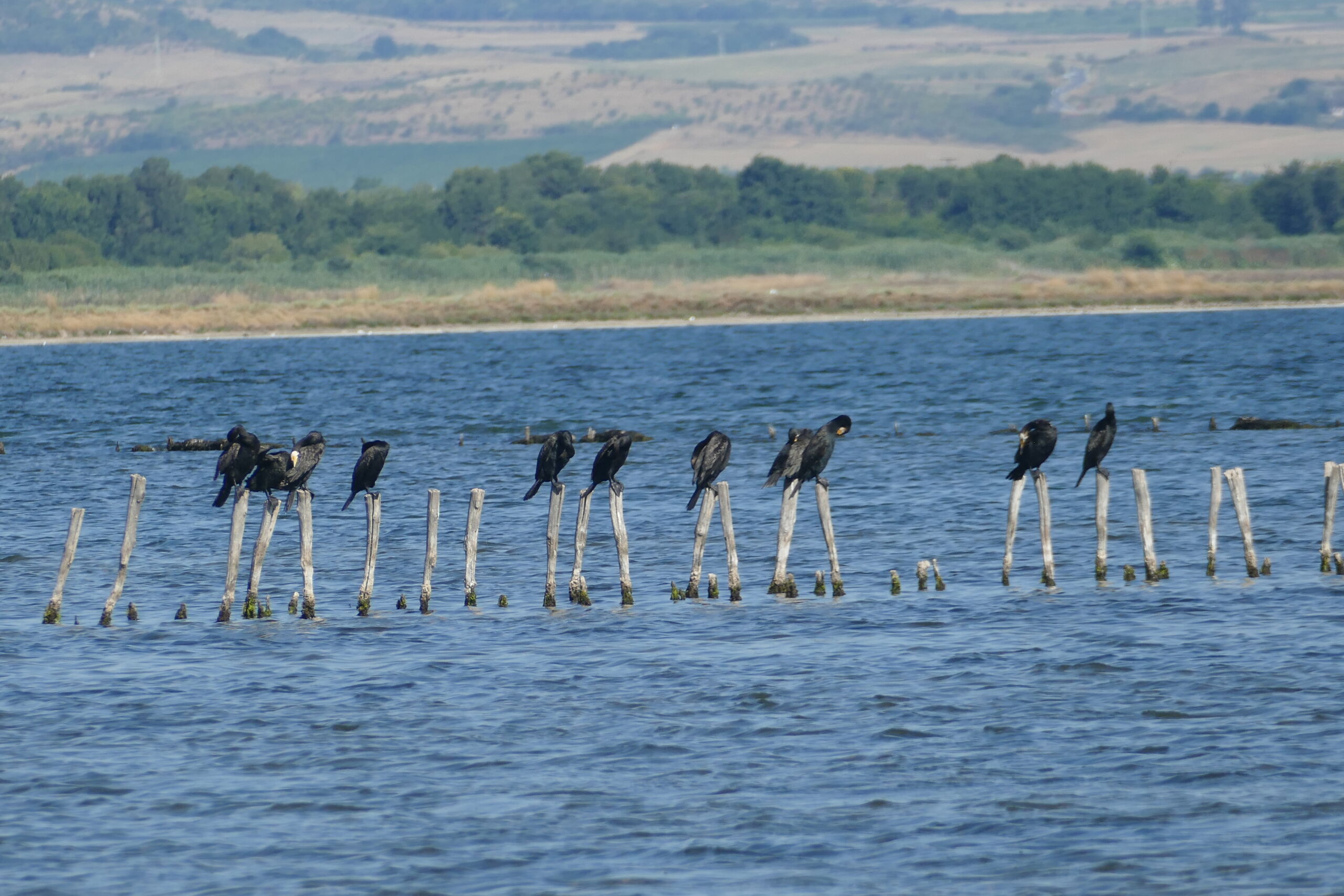
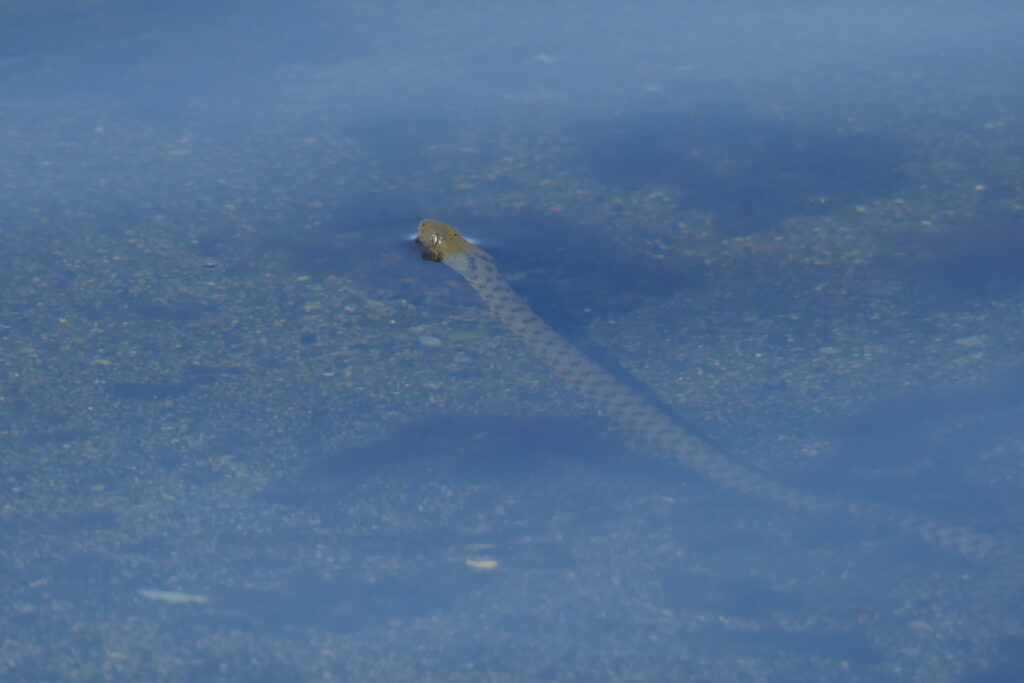
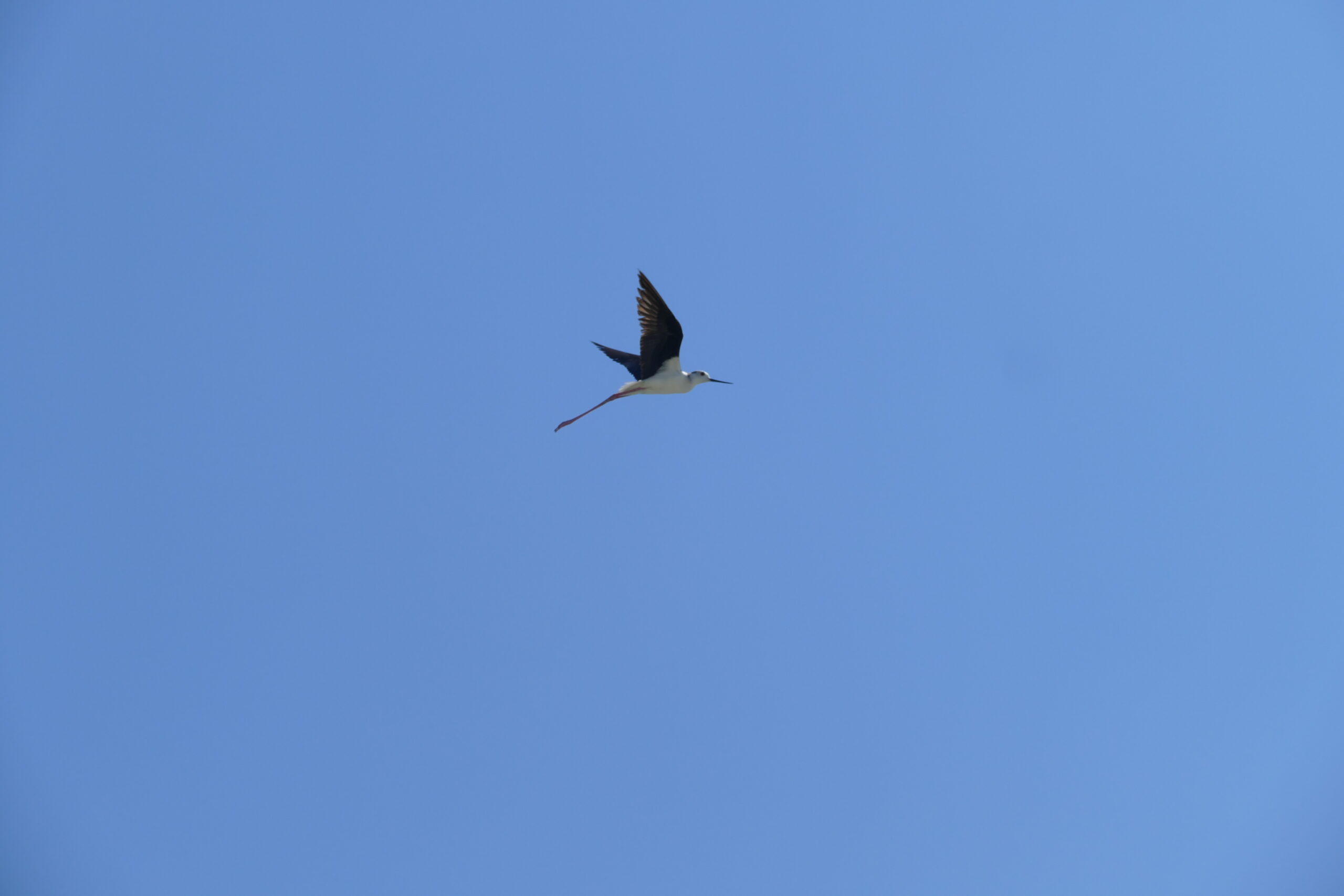
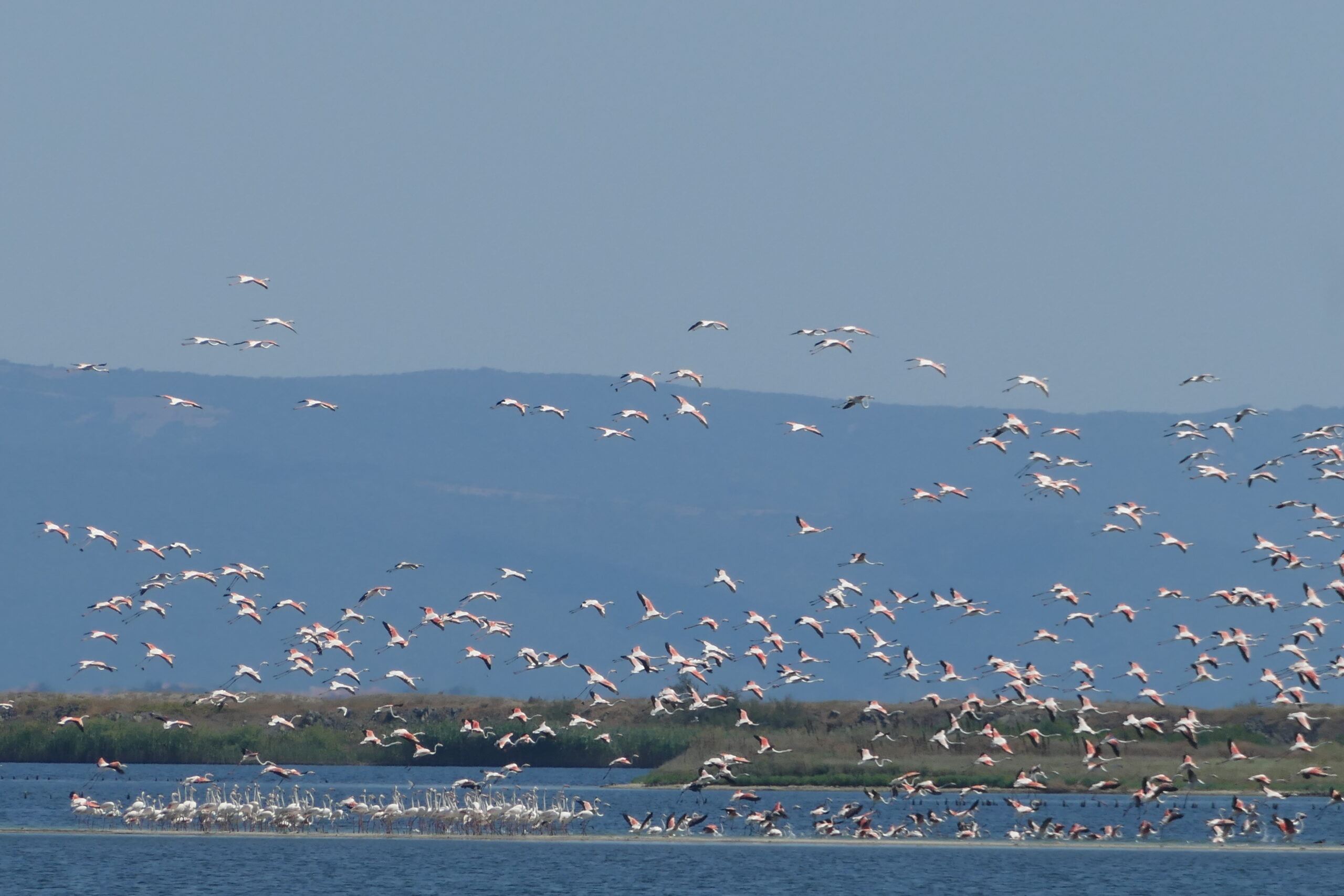
Within a recently started LIFE project ‘LIFE for Pomorie Lagoon’ Green Balkans works to establish a functional infrastructure for water management in Pomorie Lake to secure the lagoon against flood and limit the pollution, and to sustain traditional salt production, as well as to improve the habitat and the breeding sites for priority bird species by restoring and constructing new wooden breeding platforms.
After spending the morning with Galina at Lake Pomorie, we part ways with mixed feelings. On one hand, we are enthusiastic about all the birds we saw starting with the swifts in the morning and ending with the observation of the flamingo flock. On the other hand, the threats to this nature reserve are omnipresent. No matter where you are at the lake, you see the hotels at its shores. And as Galina tells us, many try to develop also the currently empty west side of the lake to grow tourism. But what we mostly feel is that Lake Pomorie is in good hands with Green Balkans that have protected it since their establishment and through the current LIFE project, which at least secures funding until 2023.
The salt of life
On the same day, we continue our journey to Burgas to meet Diyana, the project manager of ‘Lagoon of LIFE’ . She invites us to the SymBiotic space, a public interactive exhibition space in Burgas, which showcases the uniqueness of Lake Atanasovsko. Lake Atanasovsko is one of the most biodiversity-rich areas of Bulgaria, and yields the most sea salt in the entire country.
For the needs of salt extraction, Atanasovsko Lake was divided into basins with different sizes through the use of dikes, wooden barriers, and channels. The dikes and barriers create the unique structure of the lagoon with a rich variety of micro-habitats and higher biological productivity of the ecosystem. They create suitable conditions for nesting of countless birds, while the basins with different salt concentrations – necessary for the production of salt – are inhabited by species that serve as food for the birds. To maintain the state of this lake, the traditional and sustainable salt production is crucial. Without it, the dikes would break down and the lagoon would turn into a freshwater lake.
This fact means that the needs of this protected area are different than most. Most of the time, pristine nature or wilderness unspoilt by human intervention are the goals of nature conservation. In Lake Atanasovsko however, human management is necessary. Its incredible avian diversity with 333 species of 420 that occur in Bulgaria is only possible because it is a mosaic of different habitats.
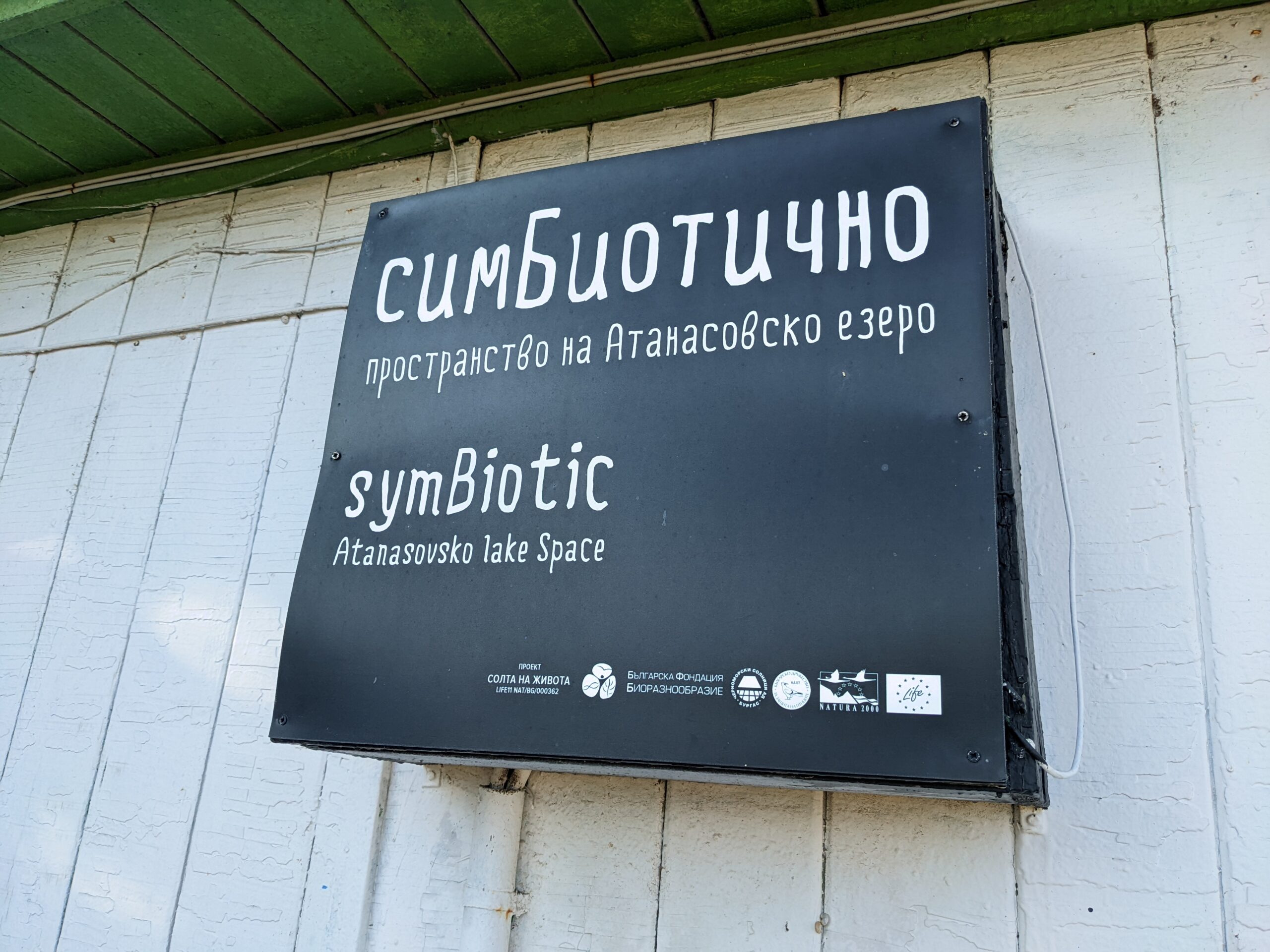
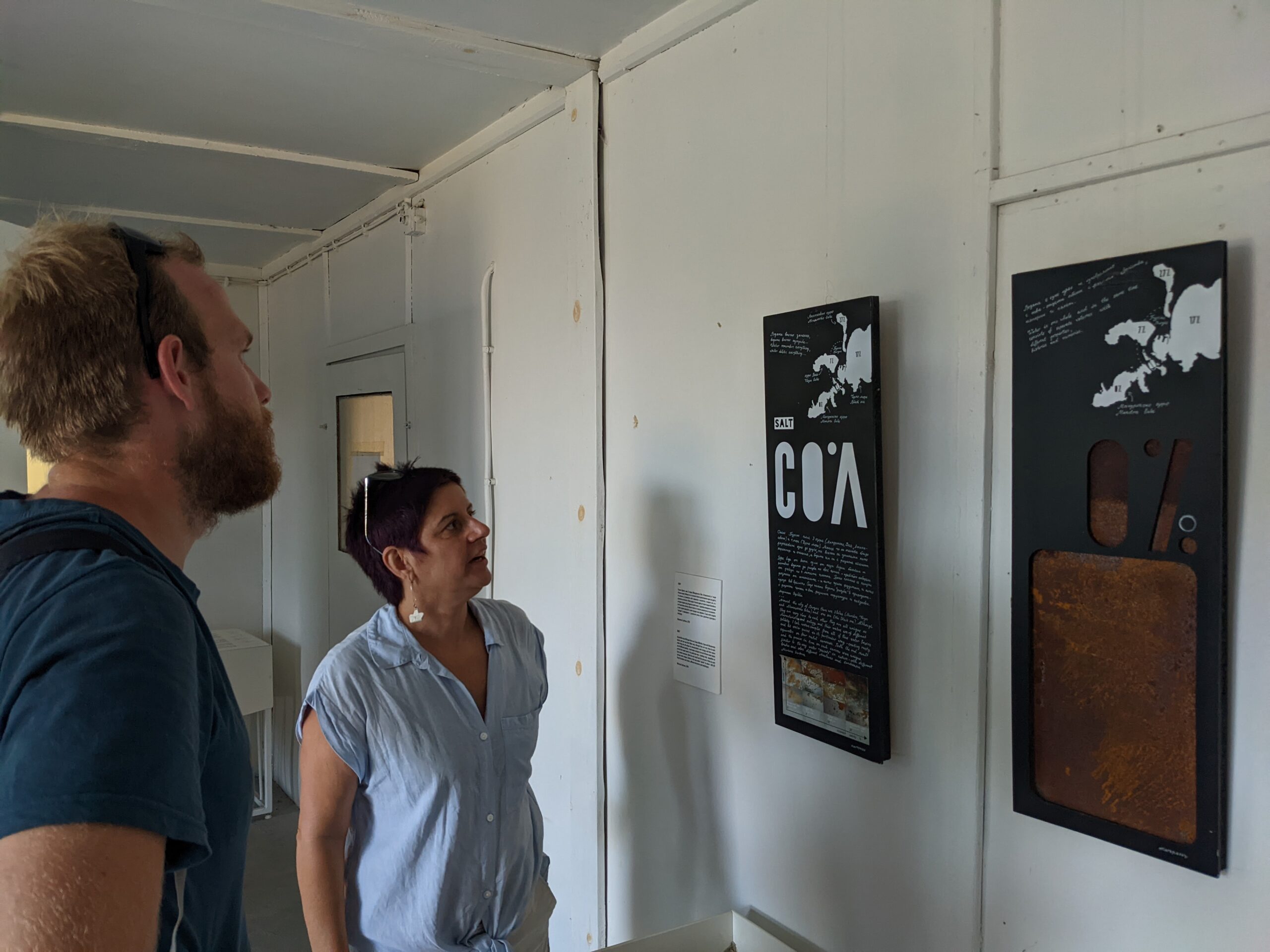

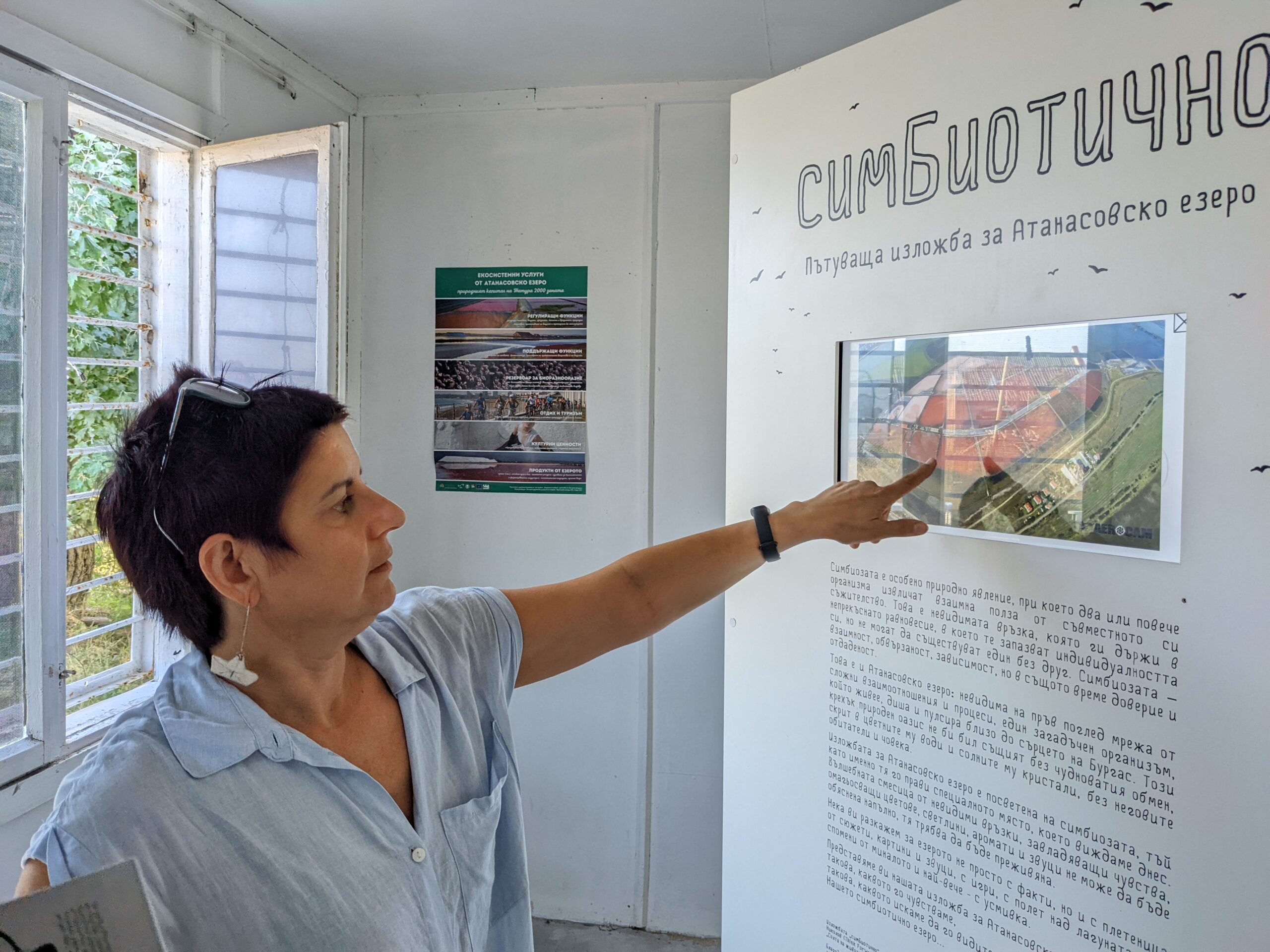
“The lake is a complex system of invisible mutual relations where there are no useless elements and the balance is fragile. The symbiosis is a specific nature phenomenon, where two or more organisms derive mutual benefit from their joint partnership. This is the invisible bond, which keeps them in constant equilibrium, where they retain their individuality, but cannot exist without each other. The symbiosis mutuality, commitment, dependency, but at the same time trust and dedication…This is exactly Atanasovsko Lake – a seemingly invisible network of complex relationships and processes, a mysterious organism, who lives, breathes and pulsates near the heart of Burgas. This tender oasis would not be the same without its strange interchange, hidden in its colorful water and salt crystals, without its inhabitants and people.”
SymBiotic exhibition – Lagoon of LIFE
Diyana explains that within the current project, BBF aims to empower the ecosystem services and many benefits the lake provides to people and wildlife. As traditional salt production is in decline, BBF and the other partners experiment with financing mechanisms that will allow for the preservation of this natural territory, and develop new products like chocolate with salt, lye soap and Fleur de Sel. Diyana tells us with excitement about the many possible products of such salt lagoons, which inspired her on previous project visits to salines in other countries across Europe. She also emphasizes that the vision goes way beyond this project. The ultimate goal of BBF is to ensure the health of this ecosystem in the long term, safeguarding the habitat, securing the future of traditional salt production practices and opening people’s eyes to the many natural values and benefits this lagoon provides to all of its inhabitants.


